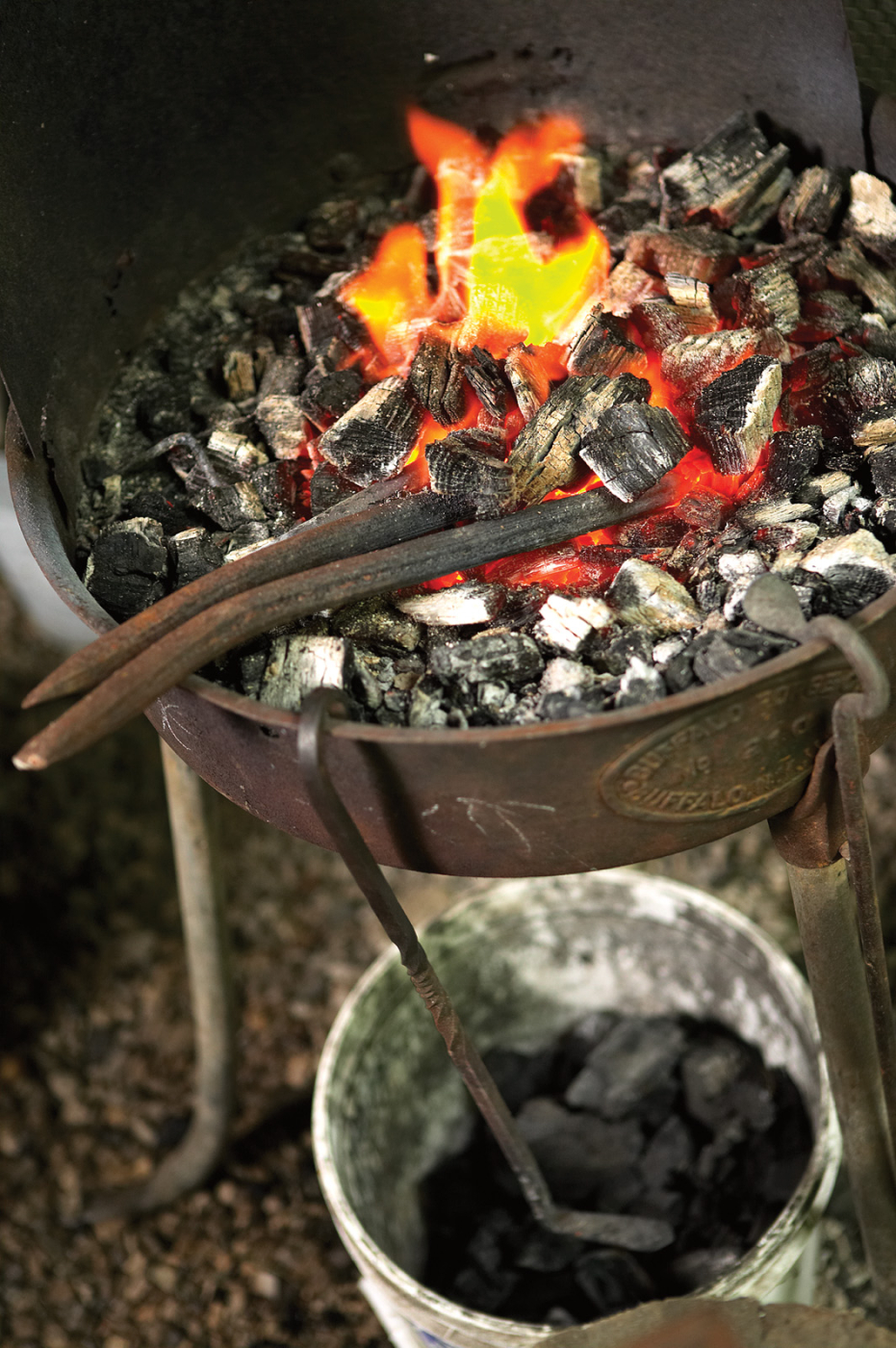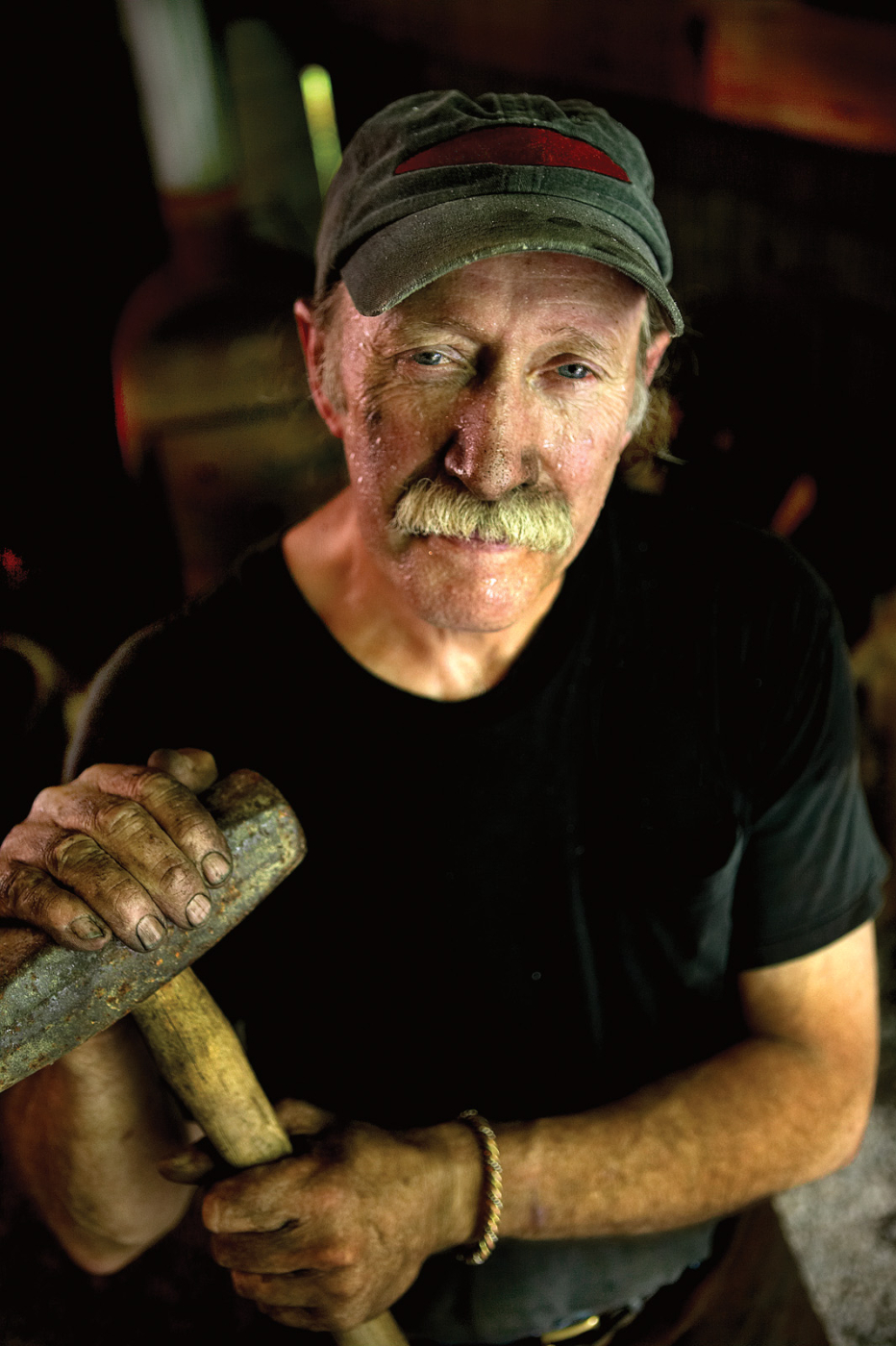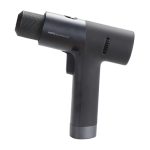We may receive a commission when you use our affiliate links. However, this does not impact our recommendations.
A chairmaker explains his fascination with the ancient art of blacksmithing and being able to make his own woodworking tools.
It was April of 1986, and I’d just arrived at a craft show up a long dirt road, an hour’s drive into the redwood-covered mountains of Northern California. I was setting up my treadle lathe – the traditional tool of the bodger or rural British chairmaker – when I realized that I’d left some critical pieces of the lathe back home. I didn’t relish the idea of a two-hour trip out and back, but I needed the parts to do my demonstration.
As if out of nowhere, another demonstrator at the show, Jon Soini, a blacksmith of Finnish descent, piped up, “Don’t worry, just sit tight – we’ll make the parts.” In less time than it would have taken to get home – let alone back – Soini had handforged four bolts, nuts and the lathe’s centers. My lathe was up and running. I thought to myself, “I’ve got to get into this.”

As it turned out, Soini’s dream was to build a wooden boat. With my training as a joiner and years of chairmaking experiences, I agreed to teach him all I knew about working wood in exchange for his teaching me what he knew of blacksmithing. For the next six years, we’d get together every Wednesday and Saturday (sauna days, not coincidentally) and pound steel at an anvil. Initially I was his striker – a laborer who wields a sledge –while Soini handled the tongs, manipulating the glowing steel on the anvil, presenting the proper face to the hammer, and patiently coaching me all the while. Gradually I learned the skills of the smith and began making my own tools. When Soini and his family moved up to the maritime community of Port Townsend, Wash. (Soini did build his boat, a 22-foot Seabright skiff), I put together my own modest smithy out next to my chairmaking workshop. I’ve since moved to Paint Lick, Ky., and these days I spend about a third of my time making chairs, a third blacksmithing and a third teaching about and demonstrating the crafts of the bodger.
Forging in Wales
For me, the primary lure of the fire is being able to make any tool I need or being able to reshape existing tools to suit my needs as a chairmaker. The attraction goes deeper, though. I was infected, you might say, at an early age.
As a lad growing up in the village of Llandrindod Wells, in the foothills of the granite mountains of northern Wales, I’d often find myself pausing at the door of the forge. In the harsh Welsh winters, the warmth and glow of the forge was a welcome stop on the way to and from school. The forge was a magnet not only to us lads, but also to the gents who sat around reading the newspaper and conducting important village business in that dim, otherworldly, orange glow. But watching the sparks fly and the steel take shape before our eyes was the real reason we stopped by. It was magic then, and it’s magic still, this transforming of raw iron or steel into recognizable objects of utility.
The Self-sufficient Bodger
My path back to the forge was somewhat circuitous. After coming to America in the early 1960s and trying my hand as a farmer outside of Truth or Consequences, New Mexico, I moved to northern California. There I began making stools and bowls on a treadle lathe. I soon became interested in the bodgers and their chairs as well as in the other rural crafts of 19th-century England. I began making these simple, elegant country chairs – the predecessors of the American Windsors –but soon found that many of the tools used to make them were no longer available. When I met Soini, I knew I’d come full circle.
Being able to make my own tools – froes, drawknives, spokeshaves, travishers, inshaves and turning tools primarily – freed me. All of a sudden, I was making my own tools from old truck leaf springs and the like, using these tools to make an elegant chair from logs I pulled out of the firewood pile, and then taking the scrap from the chairmaking and making charcoal for the forge. The independence is exhilarating.
That’s another thing the rural Welshman in me likes – that the tools and technology of the blacksmith aren’t, or don’t need to be anyway, terribly sophisticated. As with any craft or hobby, you can spend a fortune just getting set up, or you can spend next to nothing and get on with it. That’s my way – if I can put something together for nothing, I’m a happy man.
My forge is an old riveter’s forge that I found on a farm and rebuilt. My furnace is homemade from firebrick, a section of an old water heater and off-the-shelf plumbing parts. The whole thing cost $60. I’ve forged tools with a charcoal fire in a barbecue grill and a bellows made from a discarded ammunition box. Leaf springs, axles, rake tines – these are all the raw materials I need to make a hammer, knife or chisel. This ability to use what’s on hand has been the gift of the smith in every country of the world ever since man accidentally discovered iron by building a fire where the earth was rich in iron ore.
Woodworkers don’t need to make their own tools, but it can be an enriching experience. In addition to being able to make my own tools, hardware and other steel fittings, gaining an understanding of the properties of another material has helped me understand wood – my primary material – in much the same way that learning a second language improves the understanding of your own.
Here are some supplies and tools we find essential in our everyday work around the shop. We may receive a commission from sales referred by our links; however, we have carefully selected these products for their usefulness and quality.









